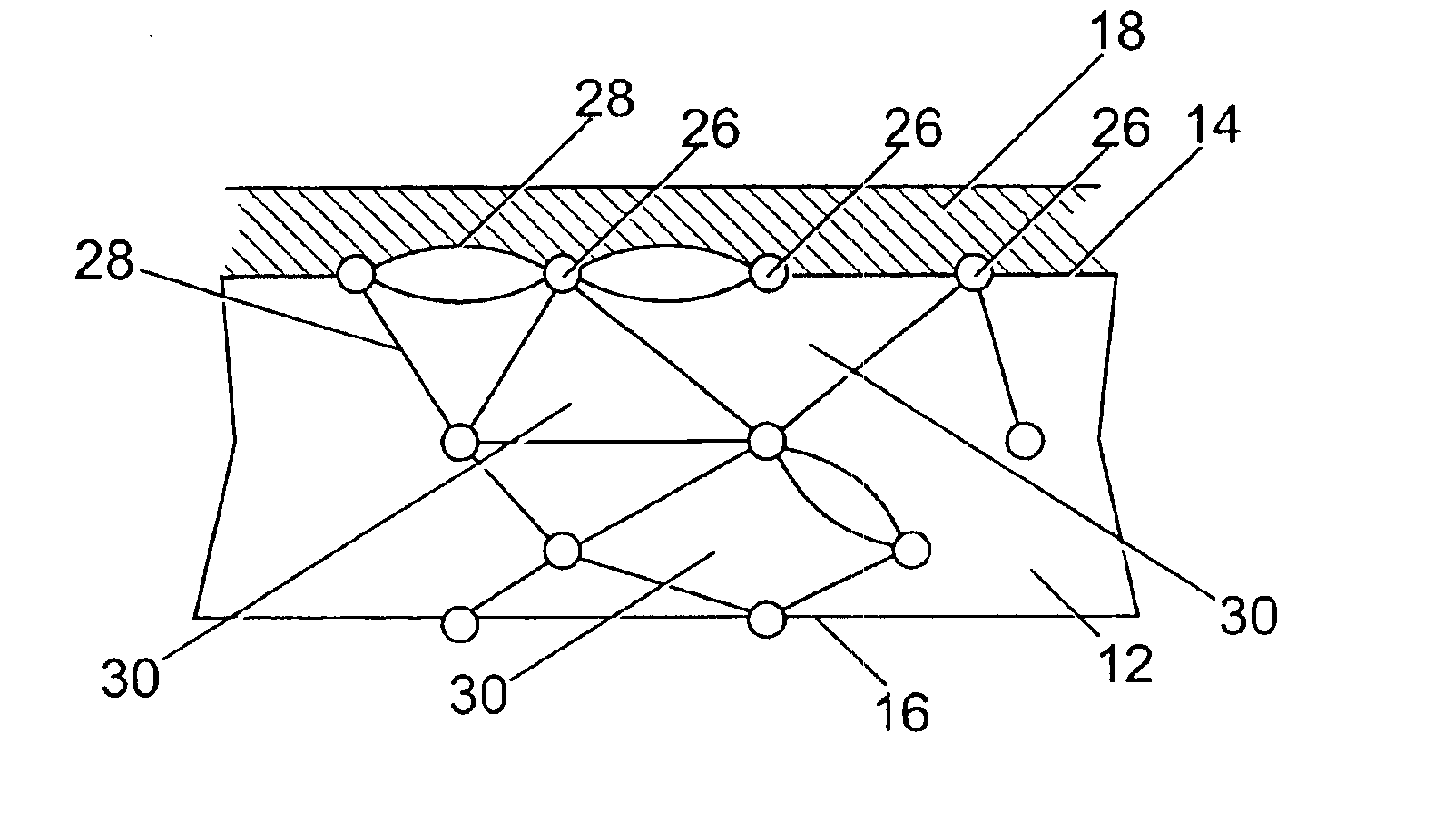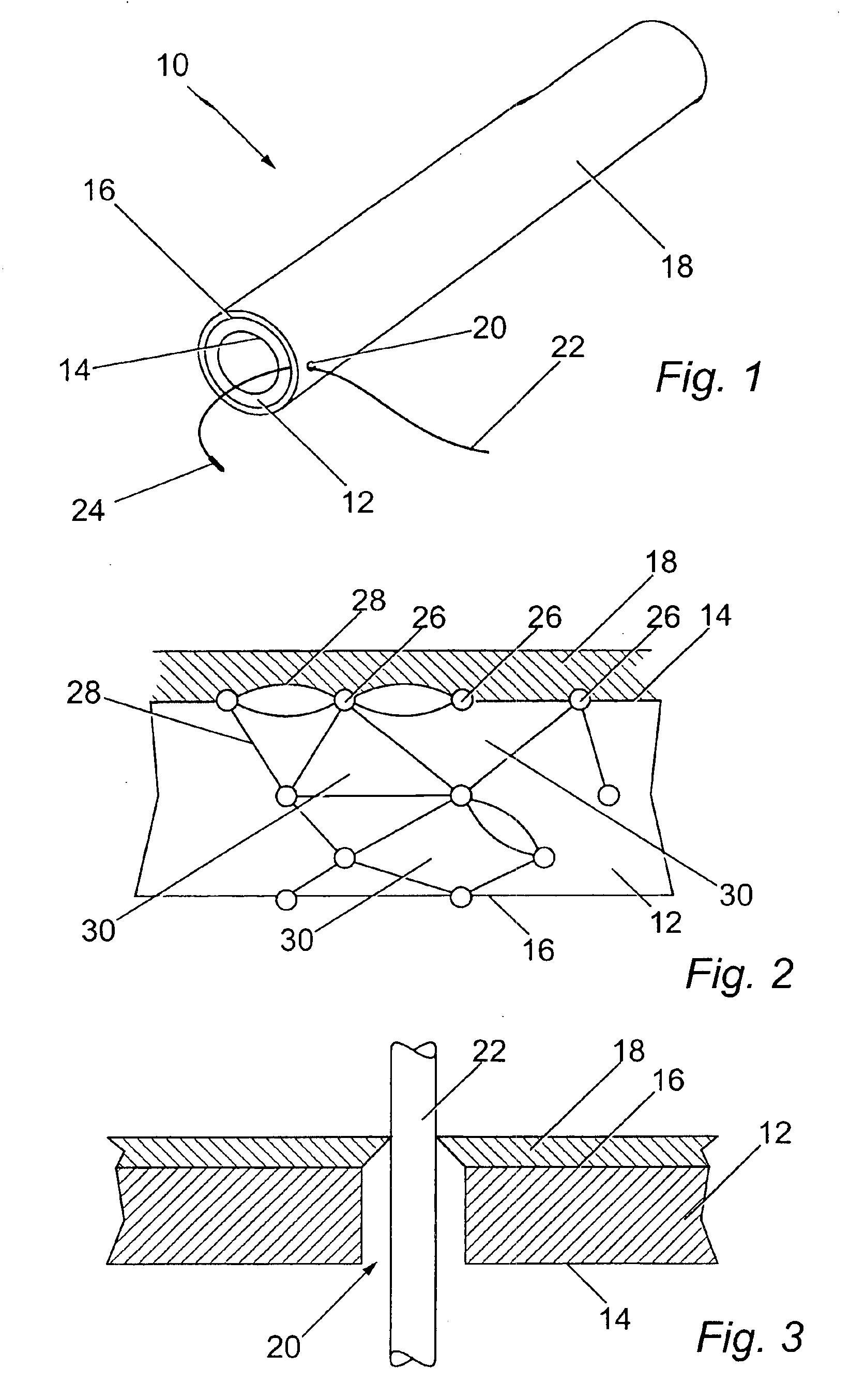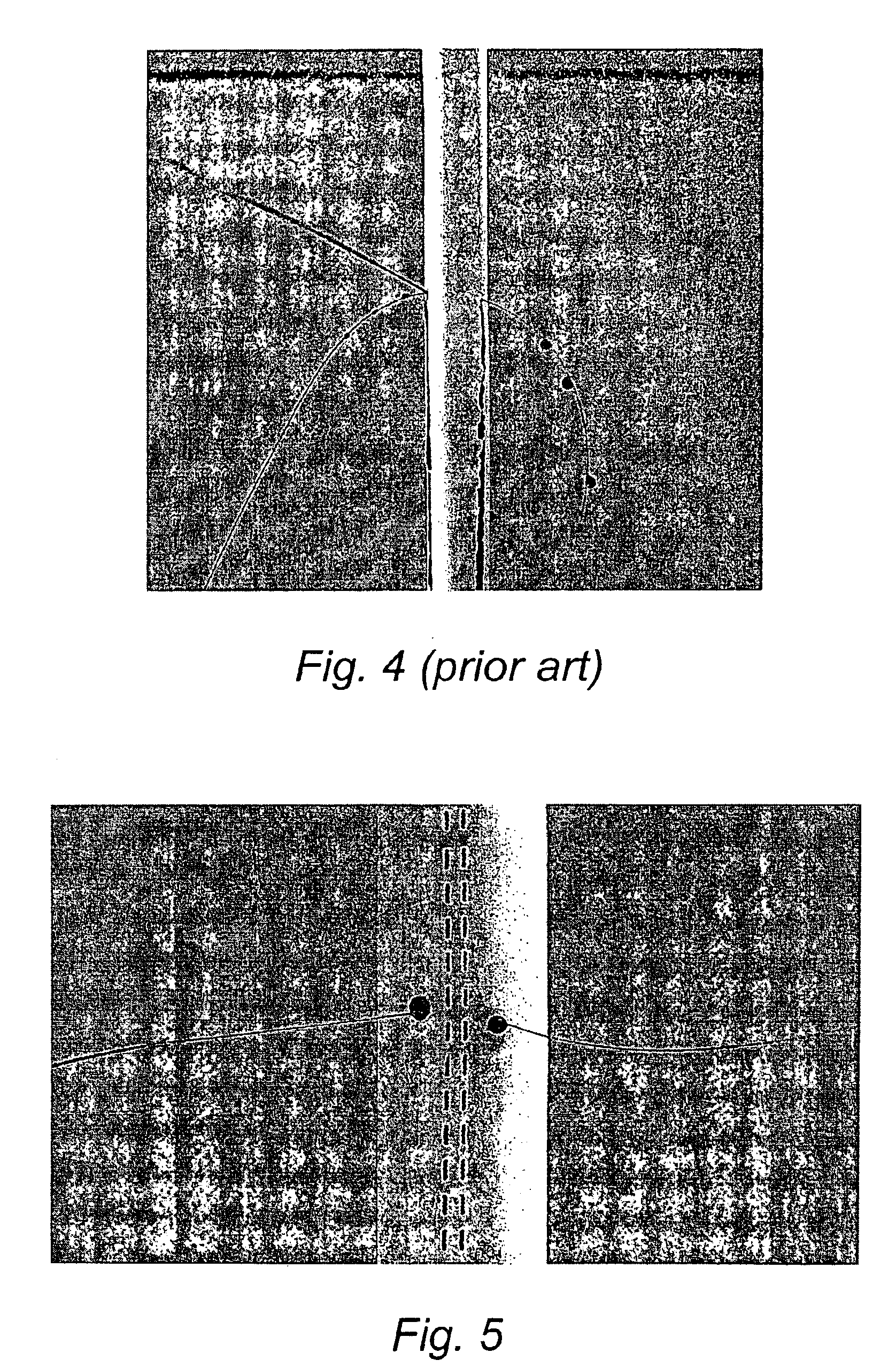Expanded polytetrafluoroethylene vascular graft with coating
a polytetrafluoroethylene and vascular graft technology, applied in the field of polytetrafluoroethylene vascular prostheses, can solve the problems of grafts leaking blood at suture holes, grafts leaking blood around the edges of sutures, and material not being able to conform closely to the smaller diameter of sutures
- Summary
- Abstract
- Description
- Claims
- Application Information
AI Technical Summary
Benefits of technology
Problems solved by technology
Method used
Image
Examples
example 1
[0043]A 10% solution of gelatin in RO grade water using 1 part limed bone and 1 part succinylated gelatin was prepared daily and maintained at a constant temperature of 37° C. in an oven until used. To produce succinylated gelatin, limed bone gelatin is treated with chloride of succinic acid. Lengths of ePTFE tube were fitted securely on a mandrel. Each end of the graft was cable tied to secure the ePTFE tube for coating.
[0044]The gelatin solution was then poured into a vertical container on a hot plate. The temperature of the gelatin was maintained between 35 and 40° C. to ensure the solution did not set during use. A second vertical container with isopropanol was also prepared and the mandrel, with graft, placed into this second container for 1 minute. Excess isopropanol was removed and the mandrel was placed immediately into the gelatin solution for approximately 10 seconds. The isopropanol bath prepares the exterior, hydrophobic surface of the ePTFE material to receive the gelat...
example 2
[0046]A 15% solution of gelatin in RO grade water was prepared daily and maintained at a constant temperature of 37° C. in an oven until used. Lengths of ePTFE tube were fitted securely on a mandrel. Each end of the graft was cable tied to secure the ePTFE tube for coating.
[0047]The gelatin solution was then poured into a vertical container on a hot plate. The temperature of the gelatin solution was maintained between 35 and 40° C. to ensure the solution did not set during use. A second vertical container with isopropanol was also prepared and the mandrel, with graft, was placed into this second container for 1 minute. Excess isopropanol was removed and the mandrel was placed immediately into the gelatin solution for approximately 15 seconds. During this time the mandrel was manually rotated to ensure complete coverage of the ePTFE tube. On removal the gelatin was manually massaged along the length of the tube while being rotated in front of a cold air fan. This procedure was perfor...
example 3
Coated PTFE In-Vitro Testing
[0053]Coated ePTFE grafts prepared according to Example 1 and equivalent uncoated ePTFE grafts were pressurised with citrated animal blood at 120 mm of mercury. A 5 / 0 prolene suture was then passed through the graft. Blood loss was measured and the graft photographed. The method was repeated using the normal leak testing mixture of propanol and glycerol.
[0054]The results are in Table 2 and the photographs are FIGS. 4 and 5.
[0055]It is clear that the gelatine coating present on the coated PTFE grafts according to the present invention provides a dramatic reduction in suture hole bleeding.
[0056]Environmental scanning electron microscopy (variable pressure SEM) was used to visualise the gelatin coating in its hydrated state. The image in FIG. 6 shows a uniform layer around 50 μm thick which penetrates a short distance of less than 50 μm, preferably less than 20 μm, for example less than 10 μm, into the surface of the ePTFE.
[0057]The usual physical parameters...
PUM
| Property | Measurement | Unit |
|---|---|---|
| thickness | aaaaa | aaaaa |
| thickness | aaaaa | aaaaa |
| temperature | aaaaa | aaaaa |
Abstract
Description
Claims
Application Information
 Login to View More
Login to View More - R&D
- Intellectual Property
- Life Sciences
- Materials
- Tech Scout
- Unparalleled Data Quality
- Higher Quality Content
- 60% Fewer Hallucinations
Browse by: Latest US Patents, China's latest patents, Technical Efficacy Thesaurus, Application Domain, Technology Topic, Popular Technical Reports.
© 2025 PatSnap. All rights reserved.Legal|Privacy policy|Modern Slavery Act Transparency Statement|Sitemap|About US| Contact US: help@patsnap.com



